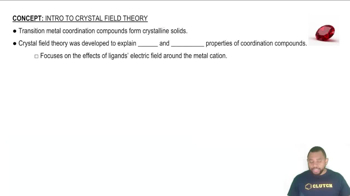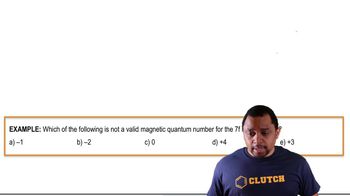Here are the essential concepts you must grasp in order to answer the question correctly.
Electronic Configuration
Electronic configuration describes the distribution of electrons in an atom's orbitals. For transition metals like molybdenum (Mo), the configuration is crucial for understanding their chemical properties and behavior in compounds. The configuration for Mo is [Kr] 5s² 4d⁵, and for its 3+ ion, it loses three electrons, typically from the 4d and 5s orbitals.
Recommended video:
Electron Configuration Example
Crystal Field Theory
Crystal Field Theory (CFT) explains how the arrangement of ligands around a central metal ion affects the energy levels of its d orbitals. In an octahedral complex, the d orbitals split into two energy levels: t₂g (lower energy) and e_g (higher energy). This theory helps predict the magnetic properties and color of the complex based on the arrangement and strength of the ligands.
Recommended video:
The study of ligand-metal interactions helped to form Ligand Field Theory which combines CFT with MO Theory.
Unpaired Electrons and Magnetism
Unpaired electrons in an atom or ion contribute to its magnetic properties. In transition metal complexes, the number of unpaired electrons can be determined by the electron configuration and the splitting of d orbitals. A weak-field ligand leads to a higher number of unpaired electrons, resulting in paramagnetism, while a strong-field ligand can lead to paired electrons and diamagnetism.
Recommended video:
 Verified step by step guidance
Verified step by step guidance

